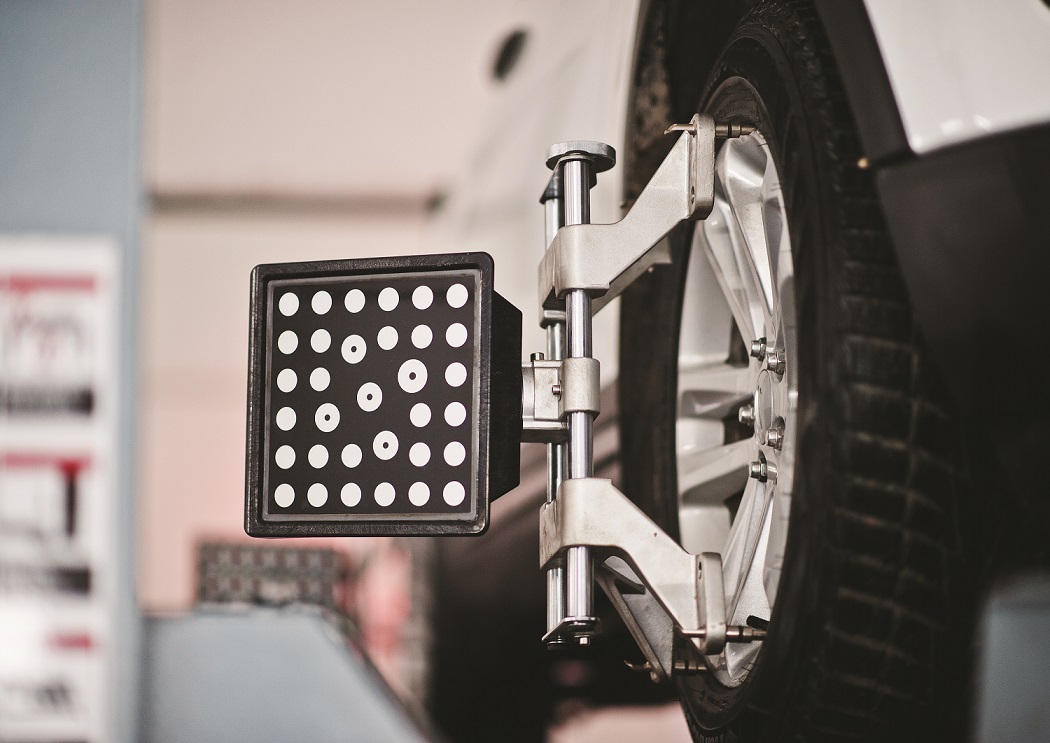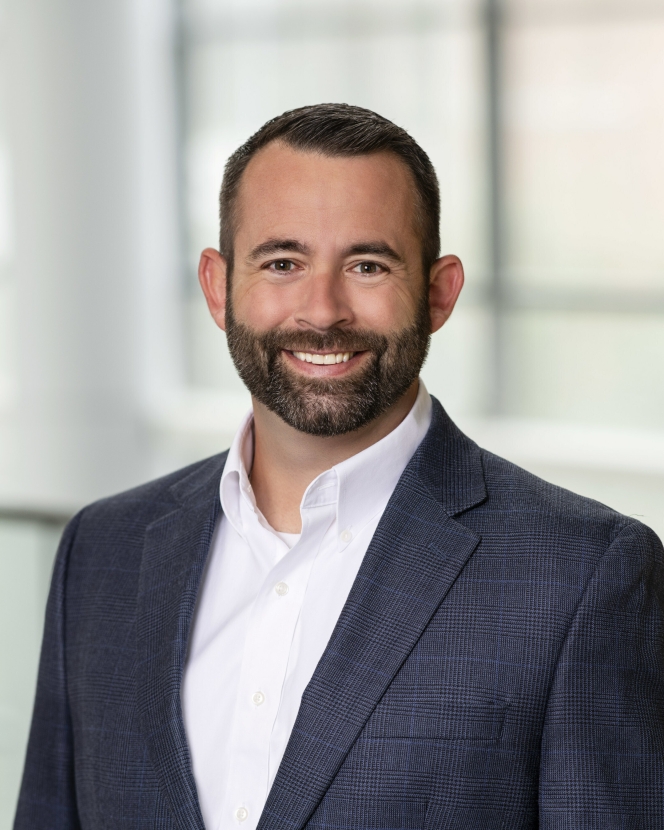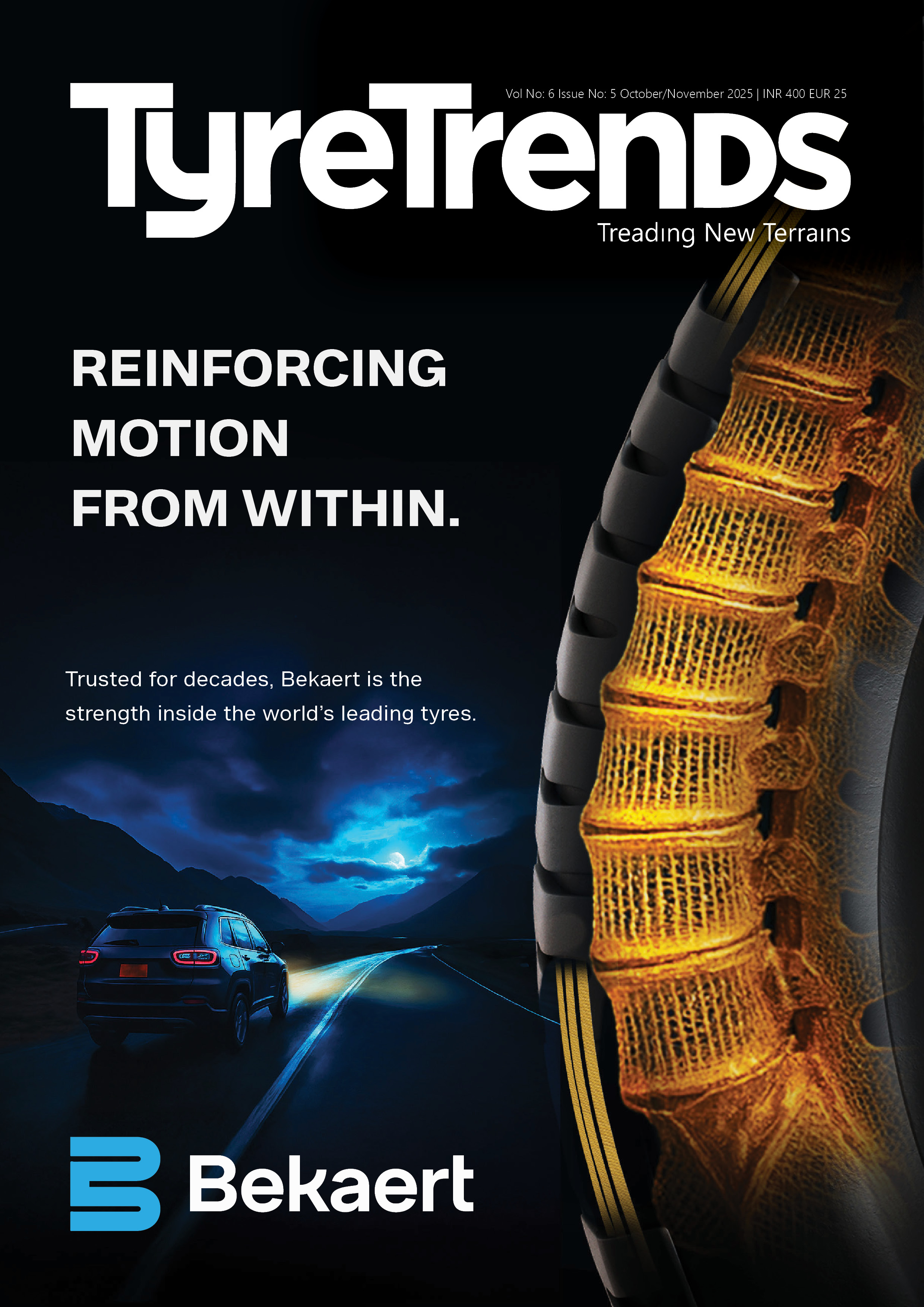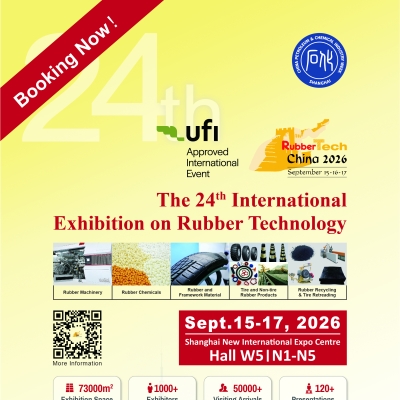Unlocking Tyre Testing
- By Adam Gosling
- December 24, 2024

Please forgive my indulgence on the topic of tyre testing, but the end result of a safe tyre is, the tyre is only safe IF the appropriate inflation pressure is used!
The physical road testing of a pneumatic tyre is the last part in a very long line of testing procedures used to manufacture the tyre. The actual manufacturing is not the end of the line as the tyre has to be competently mounted to a wheel and then appropriately inflated prior and during use.
If the tyre/wheel assembly is not balanced in mass and dimension, then the tyre is not going to perform as expected, nor will the tyre perform as expected if the inflation pressure is not appropriate to the load and speed the vehicle is going to be utilised at.
The humble pneumatic tyre is a composite assembly of many different materials, each having to work in harmony and unison with each other.
The different materials used to manufacture the tyre have already undergone substantial testing as individual products to assure the sought-after properties and qualities are exactly what is required to produce a tyre that is not only safe but performs as expected.
Many years ago, on a major construction project in Asia with one of my clients, the tyre company I was an engineer with suffered many catastrophic tread separation failures. This was a time critical project so having haul trucks out of service was a serious impediment to achieving the extensive earthworks required. A long story short, I was given to understand that there was a change in the supplier of the carbon black used in this particular tyre tread specification. The fresh manufacturer’s product checked all of the (then) testing parameters, but when it came to actual live service, there was a deficiency somewhere. I was never privy to the actual product details, just the end result of seeing haul trucks with fuel and hydraulic tanks on the ground having been slapped off by tread packages parting from the tyre casing. Having up to 1,000 kg of tread rubber flapping out of control is not conducive to a safe operation.
The testing regime for the product used was seemingly insufficient to identify this issue pre-production, ending up with very costly results.
One can read in various publications of tyre testing where a group of journalists and motoring writers take vehicles fitted with various tyre producers’ products around a circuit in an attempt to quantify the performance, in lap times, but more importantly, in feel. ‘Through the seat of your pants’ is a commonly used phrase. As a young two-wheel motorcycle racer, I progressed from using treaded road tyres to a full racing slick. The feeling was totally different and, to be honest, I didn’t ever get the slick tread tyres to operate as they were designed. After progressing to three-wheel bikes (sidecars), slicks became the ideal product.
In todays’ tyre production world, I suggest that the development on MotoGP motorcycles leads the way. Think of a MotoGP bike where cornering lean angles of up to 65 degrees, yes 65 degrees, are common place, all the time transmitting a power to weight ratio of more than 1:1, which is more than one horsepower per kilogramme of weight (including the rider!). When combined with the technology developed in the giant OTR tyres used in mining, the development of tyre performance is progressing rapidly. The ability of a giant mining tyre to support a load in excess of 100 tonnes per tyre (think 50 average passenger cars, yes that’s per tyre) whilst travelling at 60 km/hr is an everyday event for a mining operation. These tyres on a drive position transmit thousands of horsepower to motivate the truck. These numbers are far in excess compared to your daily drive!
A passenger car tyre benefits greatly from all of this research and development leading to the actual physical testing of the tyre in the hands of the journalists pushing a car around a circuit.

Yet, all this testing can be undone by the end user’s reluctance to verify that the tyre’s operating pressure is appropriate for the duty cycle being undertaken. The adoption of real time tyre pressure monitoring (TPMS) has generated an increase in safety IF the driver actually uses the data.
Race pilots (drivers and riders) carefully study the operating tyre pressure detail as they well understand that just ½ a psi may make the difference between winning or finishing off the podium.
Alas, our industry has not really educated the daily driver to the critical importance of ensuring their tyres have the appropriate inflation pressures installed. Inflation, it seems, is only important to economists and price rises.
All the material testing, quality control in production and physical mounting of the tyre can be undone by the ignorance of the end user in not attending to the inflation pressures adequately. No matter how deep the science used, the quality control measures employed within production our product’s success remains at the whim of the end user as to whether they can be bothered to ensure the very item that provides their safe passage is indeed fit for purpose.
Regardless of the impressive advances in testing technology, the serious quantitative leaps in the use of computer aided design and manufacture, the improvements in material science yielding growth in all the useful features for a tyre combined in production benefitting the end result can be undone by end user apathy. As an industry, we have a programme of continuous improvement, but does the end user have the same? Do they care?
For all the testing programmes we, as an industry, have in place, the one lacking I feel is the understanding of the level of knowledge from the perspective of the driver. Do they understand the information that the physical tyre testing provides? In the case of a motoring enthusiast, very much yes, but they make up a small percentage of the population.
The advent of the Euro 7 standards will draw the performance of tyres into the everyday realm for the legislators and regulators. Again, how the daily drivers that use their vehicles for commuting actually care is an unknown, and I feel that the care factor is probably less than zero.
In speaking with learner drivers, I ask whether the driving instructors had mentioned tyres at all and was totally unsurprised when the answer came back as a no. I know I have said before that unless we can engage drivers into understanding and appreciating their tyres’ contribution to their personal safety whilst driving, then our industries progress will be stymied.
All the progress in material science, advanced vehicle standards, wonderful testing regimes can all be negated when the vehicle driver ignores the very basic of the tyres operating requirement – the appropriate operating inflation pressure.
How we change the mindset of the end user is still testing my knowledge and patience; it is more than tiring to keep on hearing that people don’t even acknowledge the benefits they enjoy from the use of the product our industry produces.
Please educate the end user on the critical importance their tyres have in overall on-road safety. Look after your tyres, so when you call upon them to look after you, they will be appropriately equipped to do so.
Stay TyreSafe
Nitto Tire’s Tomo Mizutani inducted into Tire Industry Hall of Fame
- By TT News
- November 04, 2025

Tomoshige “Tomo” Mizutani, advisor and former Chairman and Chief Executive of Nitto Tire USA Inc., has been inducted into the Tire Industry Hall of Fame, one of the sector’s most prestigious honours.
The induction, hosted by the Tire Industry Association (TIA), will take place in Las Vegas alongside the 2025 SEMA Show, running from November 4 to 7.
With more than four decades in the tyre industry, Mizutani is widely credited with transforming Nitto Tire USA from a struggling operation in the early 1990s into a billion-dollar brand recognised for its innovation, performance, and strong connection with car enthusiasts.
“Our 2025 inductees embody the spirit of innovation and service that defines the tyre industry,” said Dick Gust, CEO of the Tire Industry Association. “Their contributions have improved safety, expanded opportunity, and shaped the way we do business worldwide.”
Mizutani’s approach combined deep market insight with bold risk-taking. By engaging with emerging communities of young car enthusiasts and later expanding into the off-road segment, he helped reposition Nitto as a brand built around passion and creativity.
Known for embracing innovation, Mizutani was among the first to champion enthusiast-driven product development and leverage digital and social media marketing to build brand loyalty. Under his leadership, Nitto cultivated a social media community exceeding 13 million followers, making it one of the most engaged automotive brands online.
“When new game-changing innovations would arise,” Mizutani said, “we viewed them as huge opportunities instead of risks.”
A frequent speaker at leading universities and industry events, Mizutani has shared his philosophy of creativity, resilience and perseverance with aspiring business leaders, often reminding audiences to “never ever give up.”
“This honour is beyond my dreams,” Mizutani said. “I’ve been privileged to meet and learn from industry legends who inspired me since my first day in America. I am deeply grateful for the incredible people who have guided, challenged, and supported me throughout my journey.”
Nokian Tyres Reports Fivefold Profit Jump as Pricing Pushes Offsets Market Weakness
- By TT News
- November 04, 2025

Finnish tyremaker’s third-quarter operating profit surges 427 percent to 21.8 million euros. Romanian factory ramp-up progressing as planned, now operating 24/7. Heavy investment phase nearing its end as the company targets a cash flow turnaround.
Finnish tiremaker Nokian Tyres reported a more than fivefold increase in third-quarter operating profit, as aggressive pricing increases in passenger car tyres and improved manufacturing efficiency offset challenging market conditions and years of operational upheaval.
The company, known for its winter tyres, said operating profit jumped 427 per cent to 21.8 million euros ($23.7 million) in the July-September period from 4.1 million euros a year earlier, when results were dragged down by 13.3 million euros in inventory write-downs related to contract-manufactured products.
Net sales grew 10.8 percent to 344.1 million euros at constant exchange rates, with the company achieving growth across all regions despite what it characterised as stable replacement tyre markets in Europe and declining conditions in North America.
“I have to say that I’m very pleased to tell you that we are really moving in the right direction,” President and Chief Executive Paolo Pompei told analysts on a conference call. “Our operating profit increased significantly. Obviously, this is very encouraging for the future journey that we have ahead.”
Pricing Strategy Delivers Results
The improvement was driven primarily by price increases implemented from late in the first quarter onward to offset rising raw material costs and to reposition products in Central Europe and North America, Pompei said.
In the passenger car tyre segment, which accounts for the bulk of Nokian’s business, net sales rose 13.2 percent to 234 million euros, whilst segment operating profit climbed to 38.9 million euros from 34.4 million euros. The segment’s operating margin rose to 16.6 percent, up from 16.4 percent a year earlier.
Interim Chief Financial Officer Jari Huuhtanen said price and mix effects contributed a positive 35 million euros to operating profit in the passenger car tyre segment in the quarter. However, this was partially offset by 25 million euros in supply chain costs, related mainly to non-recurring items from the previous year.
“Our average sales price with comparable currencies improved, and the sales of higher than 18-inch tyres increased significantly,” Huuhtanen said. “Segment operating profit improved due to price increases and a favourable product mix.”
Pompei acknowledged that volume declined 3.3 percent in the quarter but said this was “well justified by the comparability with the previous year, due to the action we made in order to release the slow-moving stock that we have accumulated due to the crisis in the Red Sea channel.”
Asked about the sustainability of price increases, given that larger competitors have recently lowered their price-mix assumptions, Pompei said: “We cannot keep increasing pricing. It was extremely important for us, again, to compensate for the increase in rising raw material costs and, at the same time, to gradually reposition in Central Europe and in North America.”
He added that the company was “not expecting the price increase to affect volume at this stage” beyond the comparison effects from last year’s inventory clearance.
Romanian Factory Hits Milestone
The company’s new factory in Oradea, Romania - described as the world’s first full-scale zero-CO2-emissions tyre factory - is progressing according to plan and is now operating four shifts to enable round-the-clock production.
Nokian said it would deliver approximately one million tyres from the Romanian plant this year, up from zero in 2024. The factory began customer deliveries in the second quarter.
“One million is the production, but the capacity already by the end of the year will be up to three million pieces and up to the end of next year, up to six million pieces,” Pompei explained. “We need to distinguish between production and capacity.”
He said the remaining capacity expansion would focus on mixing and semi-finished product lines rather than curing and building machinery, meaning capital expenditure requirements would be “really limited” for the next three years.
The Romanian facility has launched two new product lines for Central and Southern European markets, most recently the Powerproof 2, a premium ultra-high-performance summer tyre unveiled at an event in Spain attended by 160 guests from across the region.
Pompei said that in future, “more than 80 percent of what we sell in the European market will be supported by our Romanian factories for Central Europe as well as South Europe.”
North America Shines, Heavy Tyres Struggle
North America emerged as a standout performer, with sales surging 27 percent despite a declining market, driven by favourable tariff developments.
“We are finally doing extremely well in North America, and we are very pleased with the journey that we have done so far,” Pompei said.
Canada removed 25 percent counter-tariffs on U.S.-produced tyres on 1 August, whilst the United States reduced tariffs on EU tyre imports from 25 percent to 15 percent on 1 September. Nokian produces approximately 85 per cent of its U.S. volume at its Dayton, Tennessee, facility.
“Obviously, today we are in the ideal situation to deliver tyres from the US to Canada without duties,” Pompei said.
The company also disclosed a new partnership with American Tire Distributors (ATD), the largest national distributor in the United States. However, Pompei noted exposure was “relatively low” as the relationship was beginning.
However, the heavy tyres division struggled, with net sales falling 4.4 per cent to 55.4 million euros at constant exchange rates, as weakness in truck and agricultural tyre markets persisted. Segment operating profit dropped to 5 million euros from 7.5 million euros, impacted by lower volumes and inventory revaluation effects.
Asked when the agricultural market might recover, Pompei said: “I believe the agri business in particular is subject to cycles, and cycles can be long or short, but in general, obviously, we are now landing at the end of the second, I would say almost the second year of a downturn.”
He added: “I’m expecting the agri business at the level in particular to recover pretty soon in the next six to 12 months.”
Winter Season Outlook, Efficiency Drive
Looking ahead to the crucial winter tyre selling season, Pompei said the weather in September had been “a little bit too warm” but conditions were improving.
“Now it is getting colder, both in the Nordics as well as in North America,” he said. “We are expecting the winter tyre season to basically start, as I speak in this moment in November.”
The company’s flagship winter products continued to receive strong reviews, with the Hakkapeliitta 10 studded tyre and Hakkapeliitta R5 non-studded tyre taking top positions in multiple European tyre tests.
Nokian also announced it had begun personnel negotiations in Finland regarding efficiency improvements, which have resulted in eight permanent white-collar job cuts.
“This is part of our journey when we want to improve efficiency and productivity,” Pompei said. “This is necessary to support the company in this journey.”
The company’s Vianor retail chain reported improved performance, with net sales rising 7 per cent at constant exchange rates to 74.9 million euros, whilst the segment’s operating loss narrowed to 6.4 million euros from 6.6 million euros.
Nokian maintained its 2025 guidance unchanged, expecting net sales to grow and segment operating profit as a percentage of net sales to improve compared with the previous year.
The company said tyre demand in its markets is expected to remain at 2024 levels. However, it cautioned that “development of the global economy as well as geopolitical, trade and tariff uncertainties may cause volatility to the company’s business environment.”
For the first nine months, net sales grew 9.4 percent to 957.3 million euros, whilst segment operating profit rose to 40.2 million euros from 35.4 million euros. Segment EBITDA margin improved to 14.1 percent from 13.5 percent.
Asked about margin volatility in the passenger car segment, which has swung sharply on a quarterly basis over the past two years, Pompei said stability should improve.
“Of course, you will see more stability in the development of the margins moving forward, because now, finally, we can leverage our increased capacity, we can leverage an efficient manufacturing footprint,” he said.
Goodyear Unifies Global Aviation Operations, Appoints Burke To Lead Division
- By TT News
- November 03, 2025

Goodyear Tire & Rubber is consolidating its aviation tyre business under a single global structure and has named Joe Burke as Vice President of its Global Aviation business, effective Friday.
The reorganisation reflects the company's efforts to streamline operations and better serve customers across commercial, military and private aviation sectors, Goodyear said in a statement.
Burke, who has spent more than a decade at Goodyear, working across its commercial and aviation segments, will report to Grégory Boucharlat, Senior Vice President of Global Commercial Operations.
"Aviation is a strategic and high-value segment for Goodyear, and we're proud of the legacy we’ve built over the past century," said Boucharlat. "By aligning our global capabilities, we're better positioned to serve our customers with some of the industry's most trusted products and services. Joe's leadership and experience will be instrumental in driving the next chapter of Goodyear's growth in aviation."
The Akron-based tyremaker has supplied the aviation industry for more than a century, developing the world's first pneumatic aircraft tyre in 1909. Commercial airlines, military fleets and private aircraft operators use its products.
The aviation division represents a key component of Goodyear's portfolio, though the company did not disclose financial details about the segment’s contribution to overall revenue.
BKT Gets Highest Export Award From All India Rubber Industries Association
- By TT News
- October 31, 2025

Balkrishna Industries (BKT) has secured the ‘Highest Export Award’ from the All India Rubber Industries Association (AIRIA) for its export performance in the tyre sector during FY2024-2025.
BKT has been receiving this award annually since 2009, underscoring the company’s sustained export leadership and commitment to global growth. This recognition from AIRIA, which promotes the Indian rubber industry, reinforces the company’s position as a key player in off-highway tyre manufacturing.
The award celebrates BKT’s export performance across tyres, flaps and carbon black, demonstrating its success in expanding its global footprint. With a presence in over 160 countries, the company continues to set benchmarks in the international tyre market through manufacturing and a customer-centric approach.
Arvind Poddar, Chairman & Managing Director, BKT, stated, "This recognition is a testament to BKT’s unwavering commitment to excellence in manufacturing, uncompromising quality standards and strategic global expansion. For another consecutive year, we are honoured to be acknowledged as a trusted partner in the international tire industry and remain dedicated to driving innovation and growing together while delivering value across global markets”.







Comments (0)
ADD COMMENT